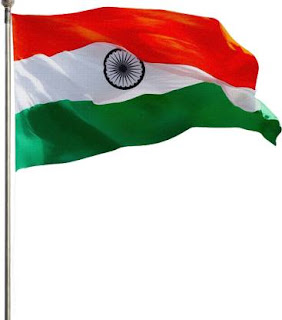Here are some codes about the Indian flag every citizen must know.
India is gearing up to celebrate the 75th Independence Day on August 15, 2021. It marks the day when India became free from oppressive British rule and is a glorious reminder of the countless sacrifices of our freedom fighters. On this day, the Prime Minister hoists the ‘Tiranga’ or the tricolour on the Red Fort.
Importance of Indian Tricolor Flag
The national flag of any country is not just a representation of the state but is also the identity of its citizens and their aspirations. It represents the values, struggles and ideals uniting the country and is unique to the land and its inhabitants.
The Indian tricolour flag, which has been a source of motivation, inspiration to the people of India within the country and around the globe, is also symbolic of the patriotic feeling and unity among its diverse communities and geography.
Though it ignites the feeling of our national identity and pride in every citizen irrespective of their caste, creed, sex, or status, sometimes, the flag gets treated in a casual way by the hands of the public.
As India celebrates its 75th Independence Day, here is a look at the proper protocol for the handling and unfurling of the national flag.
Some important Indian flag codes you must know:
1.The Indian national flag should be made of hand-spun and handwoven khadi silk/wool/cotton, having three rectangular panels of saffron(Kesari), white with a wheel at the centre having 24 spokes and green colour at the bottom.
2.The flag shall be rectangular in shape with length to height (width) in the ratio of 3:2.
3.Educational institutions, private organisations and individuals of the general public, everyone shall be entitled to display provided it is not for commercial use and is done in a dignified manner at all times.
4.The flag should not be flown after sunset and half-masted unless instructed by the government.
5.It is also not to be used as a drapery in any form for any funeral and also to not be used as part of any costume or uniform.
6.Any type of lettering or embroidery on the national flag is prohibited and is not be used as a napkin, cushion or tissue.
7.The national flag is not to be used as a tablecloth, a covering for statues and monuments or as a receptacle for delivering and receiving anything.
8. The flag is to be flown in such a manner so that it does not touch the ground, floor, dirt or trail of water.
9. A damaged flag is not to be flown and should be disposed of in private with proper decorum, preferably by burning or as may be fit in the situation with proper respect.
10.The national flag should not be flown with saffron colour on the bottom, nor should it be flown below or simultaneously with any other flag on the same masthead.
11.Paper flags may be used by the public for waving at important national, cultural, sports events, but proper care should be taken while using them. After the event, these flags should not be littered around and discarded and should be disposed of in private with proper respect.
12.The flag shall not be dipped to salute anyone or anything.
13.The national flag represents the aspirations of India and its citizens and, as such, it should not be draped over the top, bottom, sides of any vehicle.
14.The National flag is a symbol of national honour and any person who in public or at any place in public view burns, mutilate, defaces, defiles, disfigures, destroys, tramples or otherwise brings shame by writing, speaking or acting shall be imprisoned for three years or fined or both, under the Prevention of Insults to National Honour Act, 1971.
15.The national flag for all means and purposes should not be treated with disrespect intentionally, nor should it be used for any purpose that may bring it to contempt.

